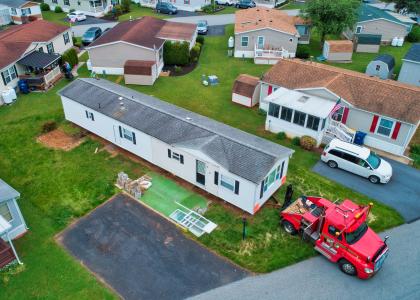ACEEE Recommendations for Energy Bill Conference - September 2007
1. Corporate Average Fuel Economy Standards. The Senate provision calls for a 35 mpg CAFÉ standard for cars and light trucks by 2020, with “maximum feasible” increases beyond this date. The provision also sets in motion the first fuel economy standards for heavy-duty trucks. We urge the House to accept this provision. Ideally, the conference will rule out the possibility, left in the Senate bill, of backing off the 35 mpg target in the rulemaking phase and will include the Markey-Platts bill’s target of 4% per year fuel economy improvements beyond 2020. ACEEE estimates that achieving 35 mpg by 2020 will reduce U.S. oil use in 2030 by 2.5 million barrels per day (MBD), reducing carbon dioxide emissions in that year by more than 400 million metric tonnes (MMT).
2. Renewable Energy Standard. We support the House provision for a 15% renewable energy standard, of which up to 4% can come from efficiency (leaving at least 11% from renewables). This is very similar to the Bingaman-Landrieu compromise floated during Senate floor debate and we urge the Senate to accept the House provision. ACEEE estimates that this provision will result in annual energy efficiency savings of about 44 billion kWh of electricity in 2020, reducing carbon dioxide emissions that year by about 36 MMT, and providing cumulative net benefits to consumers and businesses of more than $200 billion.
3. Oil Savings Targets. The Senate bill contains a provision directing the Office of Management and Budget to develop an action plan, consisting of requirements and standards to be adopted by various agencies, that will reduce U.S. oil use by 2.5 MBD in 2016, 7 MBD in 2026, and 10 MBD in 2031 relative to oil use in a business-as-usual scenario. OMB is directed to provide regular reports on progress and to revise the plan if we are falling short of the target. Policies that can be employed to help meet this target include increased use of alternative fuels, improved vehicle fuel economy, increased use of substitute feedstocks in industry, and improved efficiency in oil- and propane-heated homes and buildings (propane often comes from oil). We urge the House to accept this provision while working to improve its enforceability.
4. Appliance and Equipment Efficiency Standards. Both the House and Senate bills contain many provisions setting new minimum efficiency standards based on consensus agreements between industry and ACEEE. Since the House moved after the Senate, it was able to incorporate several consensus agreements that were not completed when the Senate acted. We urge the Senate to accept these additional standards (on external power supplies, metal halide lamp fixtures, walk-in coolers and freezers, and standby-power use of currently regulated products).
5. Lamp Efficiency Standards. The House bill sets standards for common light bulbs, requiring them to use about 20–30% less energy than present incandescent bulbs by 2012–2014 (phasing in over several years) and about 65% less energy by 2020. The initial targets can be met by advanced incandescent lamps the major manufacturers are just introducing to the market, which use halogen capsules with infrared reflective coatings. The longer-term targets can be met by compact fluorescent lamps and other advanced technologies such as light-emitting diodes (LEDs). The Senate bill contains a sense-of-the Senate provision that lamp standards should be included in the final bill. Senators Bingaman and Stevens recently introduced a bill that builds upon but modifies the House language. We urge the conferees to take the Bingaman-Stevens language but make modifications to clarify intent, close potential loopholes, and discourage marketing of bulbs that are dim and might not meet consumers’ expectations.
6. Regional Standards. Both the House and Senate bills contain provisions allowing up to two regional standards (in addition to the main national standard) for heating and cooling equipment, in order to better accommodate the range of climatic conditions across the U.S. Both provisions only allow regional standards if economically justified, including consideration of economic impacts on manufacturers. The House provision is better in that it would have DOE resolve these issues in a single rulemaking. In the Senate version, after DOE action, states would have to adopt regional standards and then petition DOE for acceptance of the state standard, based on criteria that is not specified and therefore appears to be up to DOE’s discretion. This is likely to be a time-consuming and cumbersome process with uncertain outcomes that will likely lead to a patchwork of state standards. We strongly prefer the House version because it has a clear process and will result in cohesive regions. At an absolute minimum, the Senate version should be modified so that when a state adopts a regional standard authorized by DOE, no further review by DOE is needed.
7. Energy Efficiency Tax Incentives. The House bill extends and updates the current commercial building and appliance tax incentives and contains new provisions for plug-in hybrid vehicle tax credits and authorizing states to issue tax exempt bonds for residential and municipal energy-saving projects. The Senate bill contains no tax provision, although the Senate Finance Committee reported out a bill that is similar to the House’s except it adds new incentives for combined heat and power (CHP) and advanced electric metering (a key component of demand response programs) and extends and updates the current new and existing home credits in lieu of the tax exempt bonds. We prefer the Senate Finance Committee version because it is more comprehensive and is better targeted towards advanced technologies where federal assistance is most needed. The House tax exempt bond provision will primarily benefit tried and true energy conservation measures and is likely to have substantial “free riders” (projects that would be undertaken anyway, even without federal incentives).
8. Building Codes. The House bill contains two provisions—section 9031 that calls for DOE and states to update energy codes for new buildings and section 9032 that calls for updating energy codes for manufactured housing. Section 9031 directs DOE to support efforts by model code organizations to update building codes to reduce the energy use of new buildings by at least 30% by 2010, and 50% by 2020. Cost-effectiveness is addressed as part of code development and approval efforts. The 30% target is based on a goal set by the American Society of Heating, Refrigerating and Air-Conditioning Engineers (ASHRAE) for the pending 2010 update of its model commercial building code. The 50% goal is a qualification level for energy efficiency tax credits adopted by Congress in 2005. As new codes are finalized, states are directed to either adopt these model codes or their own state-specific equivalents. Funding and technical assistance to states are authorized. Section 9032 moves authority over energy codes for manufactured housing to DOE (HUD has done little with its current authority) and calls for these codes to generally be based on the model codes for standard housing. In order to meet long-term energy goals, it is important that new buildings be as energy-efficient as is economically justified, since it will be much more expensive to retrofit these buildings after they are completed. The House provision will assist model code organizations and states to achieve this objective and should be accepted by the Senate.
9. Industrial Efficiency Programs. The Senate bill contains a provision (Sec. 233) that updates the authorization for DOE’s industrial program to reflect challenges facing U.S. manufacturing. In particular, the bill addresses the need to develop new manufacturing processes and the ability to make use of alternative feedstocks in response to the increasing cost and scarcity of energy resources. We recommend that the House accept this provision.
10. Combined Heat and Power, Recycled Energy, and District Energy. The House bill contains important new provisions that promote CHP, recycled energy, and district energy systems. The Industrial Energy Efficiency provision (Sec. 9061) directs the quantification of the potential for recycled energy, authorizes the expansion of the successful Regional CHP Assistance Centers, and encourages rationalization of utility grid access for CHP and recycled energy systems. The Energy Efficiency of Public Institutions provisions (Secs. 9074–9076) authorize a new generation of energy efficiency programs for public buildings with funding through a revolving loan fund for construction of infrastructure including CHP, recycled energy, and district energy systems. The initial cost of this infrastructure has been the biggest barrier to use of these systems in public buildings. We recommend that the Senate accept this provision.

